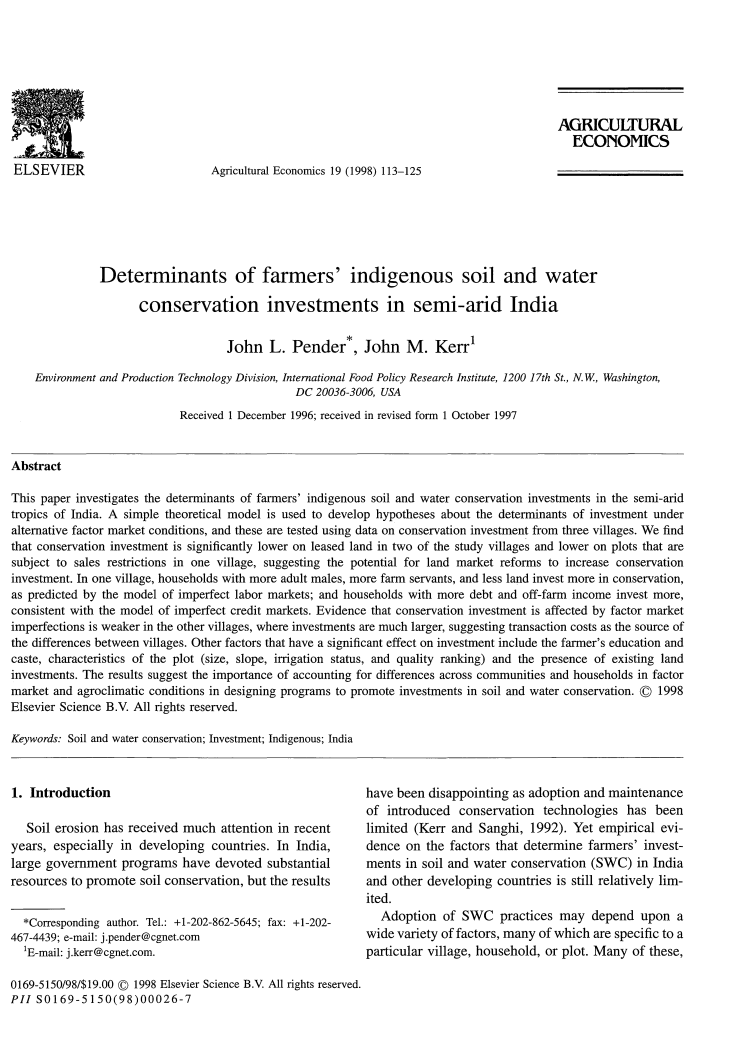Resource information
This paper explores the determinants of farmers' investments in indigenous soil and water conservation measures in the semi-arid tropics of India. Many types of indigenous conservation measures are observed in three study villages, including investments in terracing, levelling, gully checks, field boundary bunds, grass strips, drainage, and other measures. A simple theoretical model is used to develop hypotheses about the determinants of such investments in the context of possibly imperfect factor markets, and these hypotheses are tested using data from the three study villages. Across the three study villages, we find that conservation investment is significantly greater on steep plots, on plots of higher quality, on plats that have incomplete conservation structures, and on plots that are owner-operated. The latter finding confirms that land markets have important impacts on investment incentives. We also find strong evidence that credit and labor market imperfections are affecting conservation investments in one of the study villages, where investment is greater among households having more education and debt, a higher percentage of off-farm income, more adult males, fewer adult females, who farm less land, or who are of low caste. We interpret these results as reflecting transaction costs of participation in credit and labor markets, which may be high relative to the small size of investments in the village where these effects are most notable.


